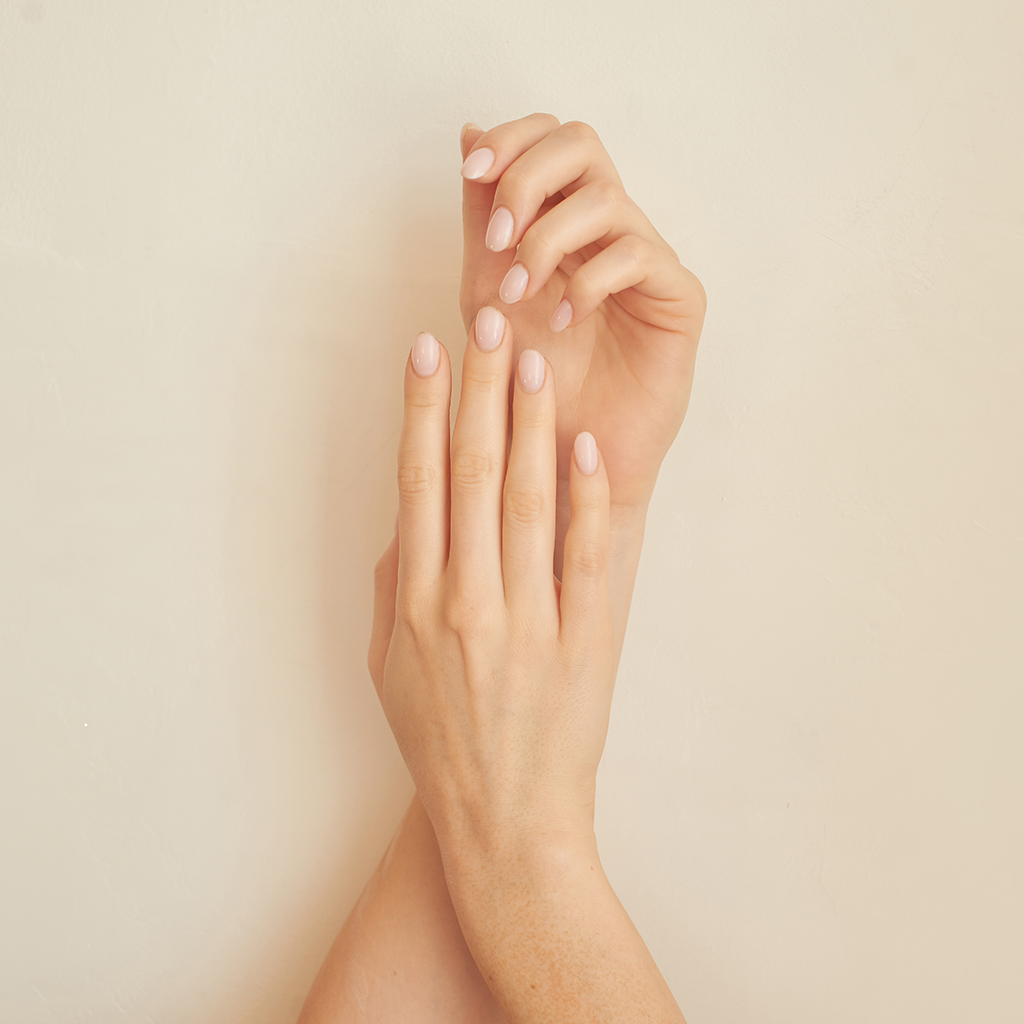Nail problems: the signs not to underestimated

Publication date: 31-08-2022
Updated on: 16-05-2025
Topic: Dermatology
Estimated reading time: 1 min
Article Author
Elena Buonanno
Medical Editor
Antonino Di Pietro
Editor and Translator
Viktoryia LuhakovaHaving beautiful and healthy nails is not just a matter of aesthetics. In fact, they often represent our health. Some nail problems such as changes in color or texture, appearance of lines or dots can be a sign of something wrong with our body, locally and also in general: infections, nutritional deficiencies up to even major diseases.
So let's learn how to read what our nails are telling us with the help of Professor Antonino Di Pietro, scientific director of the Vita-Cutis Dermoclinical Institute at the Palazzo della Salute Wellness Clinic.
What do healthy nails look like?
A healthy nail is characterized by:
- rosy nail plate, that is, the visible part, formed of horny scales made of keratin, the same substance that hair is also made of;
- smooth and regular surface.
It also appears semitransparent, so it takes on the pinkish color of the underlying tissue, called the nail bed, which is rich in blood vessels.
Brittle nails: what are the causes?
Nails are made up of vitamins, amino acids, minerals, fats and water, if any of these elements is missing, they become brittle, thin and soft.
If nails break and flake easily, it may be an indication of a deficiency in minerals (iron, copper, selenium, and zinc) and vitamins (A, B6, E). However, there are also other factors that can promote the problem, including, for example:
- excessive nail care;
- prolonged contact with harsh detergents and chemicals;
- skin conditions, such as psoriasis;
- infections, such as mycosis.
Rows, stripes or dots on nails: each has his own meaning
Lines, stripes, or dots may often appear on the nails. But what do they indicate? What is their meaning? Let's have a closer look at them below.
Nails with vertical stripes
If there are streaks on the surface, more or less deep, like many parallel vertical lines, in most cases the phenomenon is related to the physiological aging of the organism and therefore also of the nails. Although more rarely, it could be a consequence of chronic eczema, rheumatoid arthritis, or vascular insufficiency.
Nails with dark stripes
Trauma to the nail can cause the appearance of vertical dark streaks related to the resulting hematoma. Less common causes may be mycosis, a benign mole or melanoma, which is a tumor of the nail matrix, and Addison's disease, which is related to malfunctioning adrenal glands.
Horizontal streaks on nails
If horizontal, parallel streaks (called Muehrcke's lines) appear on the nails, it could be a sign of minor trauma to the nail matrix, which decreases oxygenation for a few moments, or a problem with kidney or liver failure.
Wavy nails
When nails grow in a slightly wavy pattern, alternating ridges and depressions, the cause is often too aggressive manicuring, which damages the matrix.
Pitted nails
If small punctiform depressions appear, this is called pitting, an abnormality that can be caused by skin diseases, such as psoriasis, contact dermatitis, eczema, or be related to alopecia areata.
Color of the nails
Nail color can also indicate the presence of infections, diseases or disorders related to our body.
Yellow nails
Poor quality nail polishes, smoking habit are generally the most common causes of yellowing nails. However, they can also turn yellow due to other more serious problems related to respiratory disorders, including bronchitis, sinusitis, and, in some cases, pleurisy.
White and pink nails
When nails appear half-white and half-pink or almost completely white, higher-than-normal blood nitrogen levels may be suspected; almost total whitening of the laminae, on the other hand, may be a sign of anemia or liver disease such as cirrhosis.
White or brown nails
A nail that gradually changes color, whitens and turns dark means, almost always, that onychomycosis has set in. The infection first localizes in the nail bed and then reaches the actual nail, which becomes thicker and crumbles easily.
What is onychomycosis and how to prevent it?
Mycosis, or rather onychomycosis, when it affects the nails, is a very common infection caused by fungi, yeasts or molds that makes the nails white or yellowish, jagged and brittle. It mainly affects the toenails: the heat and moisture created inside the shoes promote the development and proliferation of microorganisms. The fungus responsible for the infection penetrates through micro-cracks in the nail, destroys the keratin layer that makes it up and transforms its PH from acidic to alkaline. The consequence is that the nail changes with obvious changes in shape, color and texture.
Risk factors:
- wearing shoes that do not allow perspiration, promoting the creation of a wet environment;
- walking barefoot in public and humid places, such as swimming pools and gyms;
- excessive sweating;
- an overly aggressive manicure with the removal of the cuticles around the nail attachment, which act as a barrier against germs;
- circulatory disorders;
- diabetes;
- advanced age.
While not much can be done against some risk factors, others can be modifiable. Then onychomycosis prevention comes through the adoption of some good rules such as:
- dry hands, feet, and the space between fingers carefully;
- do not walk barefoot in common humid environments;
- prefer natural fiber socks;
- favor open-toed shoes whenever possible;
- avoid removing cuticles and do not use aggressive manicure products.
Should mycosis nevertheless occur, treatment consists of topical antifungal lotions and creams, combined in some cases with oral antifungals, which work by eradicating the responsible fungus. It is important to note that this is a very time-consuming treatment: from 6 months for fingernails to 1 year for toenails.
Who is the nail doctor?
In all cases of abnormalities or changes in nail surface or color, the first reference is always the dermatologist. The specialist will first assess the presence of skin diseases, disorders or infections, suggesting, if any, the most effective therapies and treatments.
If, on the other hand, both the history and any examinations rule out dermatological problems, he or she will refer to the most appropriate referral specialist depending on the type of pathology suspected.
How to strengthen nails?
Here are some tips for strong, beautiful and healthy nails:
- watchword 'hydrate': proper hydration, it is known to be essential for the well-being of the whole body and also of the nails, which are composed of 20 percent of just water. But how to do it? With specific products or with natural homemade ointments. We suggest one: mix a hazelnut or shea butter with a few drops of lemon and then massage it into the nails, especially on the toes, after taking a good foot bath;
- choose the right supplements: the most effective substances for combating brittle nails are biotin, zinc, selenium and bamboo. Biotin is a water-soluble vitamin of the B group, also known as vitamin H. Together with selenium and zinc, it contributes to the maintenance of hair and nail health. Bamboo extract, on the other hand, is rich in organic silicon, for collagen formation, and glycosaminoglycans, which promote healthy nails and hair. In the form of supplements these valuable substances can also be integrated in your diet, which should always be rich in vitamins and minerals, the supply of which is ensured in particular by regular and varied consumption of fruits and vegetables;
- no too aggressive manicures: DIY manicures that are too aggressive can promote weakening of the nails and expose them to a greater risk of infection. So what is the secret to an aesthetically beautiful, yet nail-friendly manicure? First, as already mentioned, avoid cutting the cuticles: you can use a cherry stick to push them down. Also, it is advisable that the length of the nail be kept level with the top of the fingertip. Finally, when cutting, it is good to smooth the edge with a cardboard file: the metal one can cause minor trauma to the nails;
- semi-permanent nail polish and gel? Yes, but without overdoing it: in recent years we have seen a real boom in the use of semi-permanent nail polish and gel. Certainly these 2 techniques allow you to always have flawless nails, but their overuse can in the long run affect the health of your nails. In fact, both techniques involve a step of abrading the nail, so in a sense the nail plate is weakened in both cases. However, semi-permanent nail polish is more gentle: it involves a light filing of the nail and removal is possible using a special solvent. Gel, on the other hand, in addition to an initial filing, also involves a final abrasion to 100% remove the residue so it can be even more invasive on the nail plate causing weak and brittle nails. The advice then is to keep them natural for at least a few months during the year.